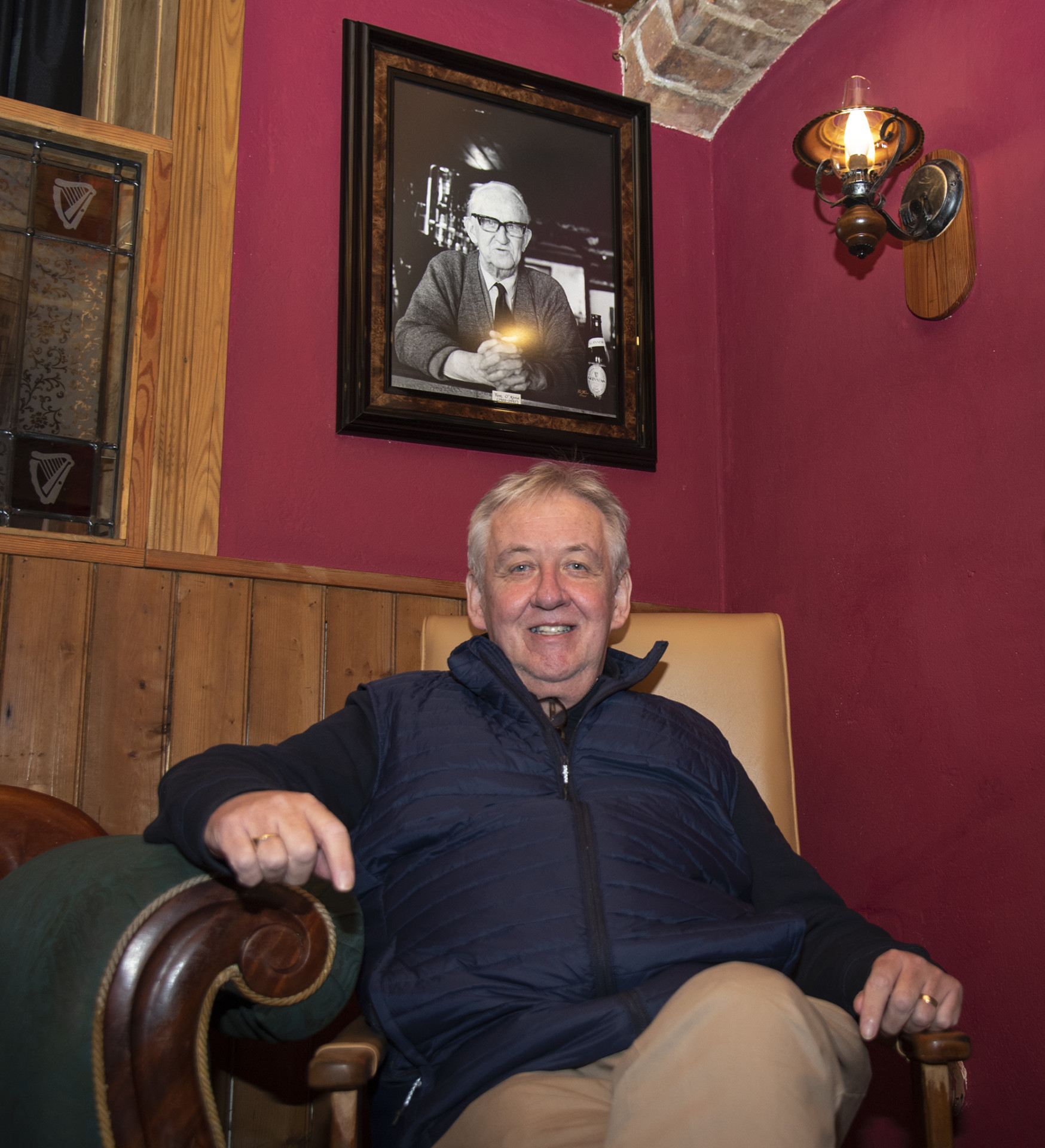Patrick ‘The Publican’ and Mr Folk Park; these two defining monikers succinctly sum up the professional life of ‘the best liked man in Drumquin’, the one and only, Patrick O’Kane.
The first nickname describes Patrick in his role as the most recent O’Kane to run the 200-year-old family bar in Drumquin, O’Cahan Arms.
It is there, in what is still affectionately known as ‘Tom’s’ (after Patrick’s father), that he has enjoyed the craic with customers for 30 years.
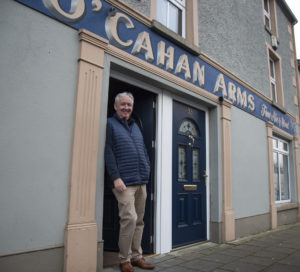
The second nickname captures Patrick’s passion for the Ulster American Folk Park, to which he was a loyal servant for 34 years.
In his time there, Patrick watched the small history park grow into one of the most popular tourist attractions in the North; what was once an interesting, but incomplete, insight into the life in old Ireland is now an immersive experience which follows the transatlantic journey of a 19th century Irish emigrant from the streets of Ulster, across the ocean in a coffin ship, and down the gangplank to the New World of America.
But last month, at 60-years-of-age, Patrick reluctantly decided to leave this world behind, reasoning that the time had come to pass the reigns on for the next generation of staff to drive the Folk Park into the future.
We spoke with the easy-going, gregarious and good-humoured Patrick to find out about his life in the Folk Park.
We chatted about the humble beginnings of the Park, touched on an unlikely meeting with a US president, and examined Patrick’s role in bringing Ireland’s biggest bluegrass festival to Omagh.
Humble beginnings and a foot in the door
“I first got my foot in the door of the Folk Park back in 1982 as part of an Ace scheme, which was a programme designed to get young people off the dole and into work,” recalled Patrick.
At that time, the Folk Park was still in its infancy after having only been established in 1978 by Eric Montgomery, who was the head of civil service in the North.
Even though trips to the Folk Park are such a ubiquitous part of the primary school experience in Omagh and its surrounding areas as to almost occupy its own special space in our collective memory, a surprising number of people don’t know the origin story.
Patrick took the opportunity to enlighten these people.
“Mr Montgomery read the memoirs of Thomas Mellon, the boy who grew in up in the house which would become the seed from which the Folk Pak, as we know it, would grow.
“While many of buildings, which would later spring up around the Mellon House, would either be replicas, constructed on-site, or authentic buildings imported from elsewhere in Ireland or even America, Mellon House occupies the same space that it did the day it was built,” said Patrick.
Including Mellon House, there were only nine buildings in the Park when Patrick came in 1982 – there are now 42.
“I think a masterplan was drawn up by Mr Montgomery and the board of trustees early on – but I had no idea about that: I just fell for it. I didn’t know I was witnessing the early stages of something very special,” said Patrick.
Rising through the ranks with Richard
Mellon House was the atom from which everything else would explode, and Patrick, along with his persevering partner, Richard Hurst, was there to witness the big bang with their own eyes.
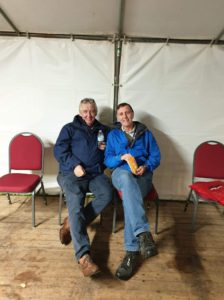
“From day dot, I was involved with the visitor service; meeting and greeting the public when they arrived,” said Patrick.
The young Patrick must have excelled, because, when his year’s apprenticeship expired, his contract was extended for another year.
“I completely fell for the Folk Park and quickly realised, like most people who get the opportunity to work in it, I never wanted to leave,” he said.
But while it would transpire in time that the Folk Park was written in Patrick’s fate, it wouldn’t be until 1986 that he would be made a permanent employee.
“It was 1986 when I got in through the door the second time, and this is when I met Richard Hurst.”
Patrick fondly reminisced about how the two young men grew into seasoned colleagues, and eventually, old friends.
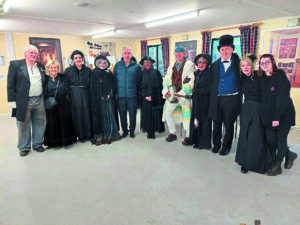
“Richard and I worked as wardens for a number of years, opening houses and stacking fires, until Richard was appointed supervisor,” recalled Patrick.
Not to let his old buddy ascend too far above him in the Park hierarchy, Patrick successfully angled to get himself promoted to assistant supervisor.
In joint captaincy, for decades, they steered the ship continually toward even bigger and brighter horizons.
The Bluegrass Festival
“One of my proudest contributions to the Park has been the role myself and Richard have played in procuring talent for the Bluegrass Festival,” said Patrick.
Tickets would be bought and the two men would be flown to America and Europe on recon missions to track down the most entertaining ‘mountain musicians’ they could find.
“We would travel to places where our antecedents had gone centuries before us, but while they travelled by boat with maybe only an instrument on their back and their tunes in their head, we went with two keen sets of ears and a healthy budget to induce the best bluegrass bands across the Atlantic.”
The persuasive partnership never failed to arrive back without a line-up loaded with some of the hottest, hoedown musicians on the circuit.
Meeting a certain Mr Clinton
Another proud, albeit slightly surreal, moment that stands out for Patrick is when he met the US president, Bill Clinton.
“Bill Clinton came to meet some of the families hit by the Omagh bomb, and while he was in town he came out to the Park,” said Patrick.
Picture Patrick landing into work at six in the morning to make sure the place is looking the part for the presidential visit only to be greeted by a number of CIA operatives conducting a ‘security assessment’ of the grounds. They hand him an earpiece and nod, rather sternly.
“They were checking manhole covers and speaking up their sleeves,” said Patrick. “And explaining which rooms would be suitable for Mr Clinton to be bundled into in the event of some unforeseen emergency.”
Patrick got shaking hands with Bill Clinton, but there were not many words exchanged, as he recalls. However, in a slightly ironic encounter, a group of US students who just happened to be in town got their photos with Mr Clinton by the 18th century post office.
“Turns out the only way a group of young Americans can get a photo with their own president is by coming to Omagh,” laughed Patrick.
Retirement and lessons learned
But now, Patrick has decided it is time to step back and allow a new generation of young, enthusiastic, creative people to continue to drive the never-ending project forward.
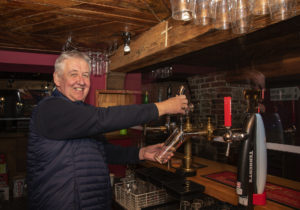
“I would not begrudge someone up-and-coming the opportunity to make their mark on the Park,” he said.
Patrick has a rich bank of memories he can revisit in his mind when he likes; an album of pictures as thick as a thatched roof, and the opportunity to call down whenever he should choose.
“I love the Folk Park – even though I have been there for 34 years I am not jaded, bored, or any less passionate than I was when I first began.
“I want to thank everyone that I have ever worked with for making my time at the Folk Park a wonderful experience – there is not a bad word I could say about the Folk Park.
“I could encourage anybody with a love of people and curiosity of the past to consider a job there. It’s a great life.”






